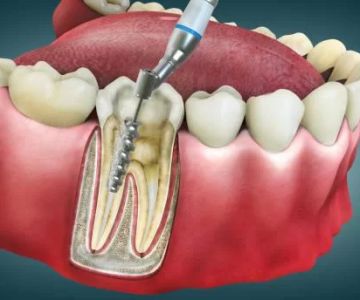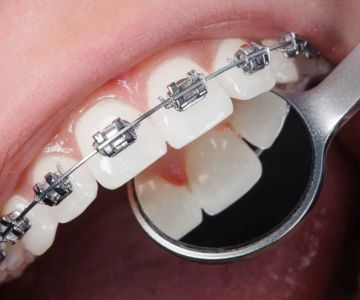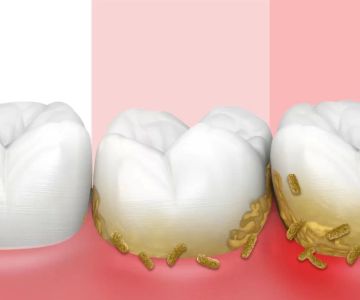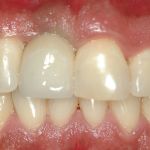How to Use a Dental Ultrasonic Scaler: A Guide to Effective Teeth Cleaning
- What is a Dental Ultrasonic Scaler?
- Benefits of Using a Dental Ultrasonic Scaler
- How to Properly Use a Dental Ultrasonic Scaler
- Common Mistakes to Avoid When Using an Ultrasonic Scaler
- Why Regular Use of a Dental Ultrasonic Scaler is Important
What is a Dental Ultrasonic Scaler?
A dental ultrasonic scaler is a tool commonly used by dental professionals to clean teeth, especially in the removal of plaque and tartar. The ultrasonic scaler uses high-frequency sound waves to create vibrations that break up the hardened plaque on teeth. Unlike traditional manual tools, this technology is both faster and more efficient, reducing discomfort and providing a deeper clean. This tool is essential for maintaining optimal oral health, especially when plaque build-up becomes hard to remove with standard brushing and flossing.
Benefits of Using a Dental Ultrasonic Scaler
The dental ultrasonic scaler offers numerous advantages over traditional methods. Here are the key benefits:
- Efficient plaque and tartar removal: Ultrasonic scalers can remove plaque and tartar more effectively, especially in hard-to-reach areas like between teeth and along the gum line.
- Less discomfort: The ultrasonic vibrations are less abrasive than manual scaling, making the procedure more comfortable for patients.
- Prevention of gum disease: By effectively cleaning the teeth and gums, ultrasonic scalers help prevent gum disease, which can lead to more serious oral health issues.
- Time-saving: The ultrasonic scaler allows for quicker cleaning, which is ideal for both patients and dental professionals.
Using this tool provides a more thorough clean and can prevent long-term dental problems by maintaining oral hygiene in a more efficient manner.
How to Properly Use a Dental Ultrasonic Scaler
When using a dental ultrasonic scaler, it’s important to follow the correct technique to ensure effective cleaning and prevent injury to the gums. Here’s a step-by-step guide on how to properly use an ultrasonic scaler:
- Preparation: Ensure the ultrasonic scaler is clean and properly sterilized before use. Attach the appropriate tip based on the patient’s needs (scaling or periodontal maintenance).
- Adjust settings: Set the ultrasonic scaler to the appropriate power level. For most patients, a medium setting works best for plaque removal.
- Position the scaler: Hold the scaler at a 15-20 degree angle to the tooth surface, making sure to direct the tip towards the gum line for effective cleaning.
- Technique: Move the scaler along the surface of the tooth, making short, gentle strokes. Be mindful of sensitive areas and adjust the pressure as needed to avoid discomfort.
- Rinse and check: After completing the cleaning, rinse the patient’s mouth thoroughly and check for any remaining plaque or tartar.
Proper technique is key to using the dental ultrasonic scaler effectively, ensuring that plaque and tartar are removed thoroughly while maintaining patient comfort.
Common Mistakes to Avoid When Using an Ultrasonic Scaler
While ultrasonic scalers are effective tools, there are common mistakes that can reduce their effectiveness or cause discomfort. Here are some things to avoid:
- Incorrect angle: Holding the scaler at an incorrect angle can lead to ineffective cleaning and discomfort for the patient. Always aim for a 15-20 degree angle for optimal results.
- Excessive pressure: Applying too much pressure on the scaler can cause discomfort or even damage the enamel. Use a gentle touch for better results.
- Not adjusting the power: Using too high or too low of a power setting can either cause discomfort or fail to clean effectively. Adjust the settings based on the patient’s needs and sensitivity.
By avoiding these mistakes, you can ensure a more effective and comfortable cleaning experience for patients while protecting their dental health.
Why Regular Use of a Dental Ultrasonic Scaler is Important
Regular use of a dental ultrasonic scaler is crucial for maintaining optimal oral hygiene and preventing common dental issues like cavities, gum disease, and bad breath. Even with regular brushing and flossing, plaque and tartar can build up in hard-to-reach areas, making ultrasonic scaling essential for a deeper clean. Many dental professionals recommend using the scaler every 6 months during a routine check-up to ensure long-term oral health and to prevent issues from developing. Additionally, early removal of tartar can help prevent gum recession and the progression of gum disease.
For a more efficient and thorough cleaning, incorporating ultrasonic scaling into your dental hygiene routine can significantly improve your oral health.
Ready to learn more about using a dental ultrasonic scaler or purchase one for your practice? Visit Dentistry Toothtruth for expert advice and the latest dental tools to enhance your practice and patient care.







 Root 66 Endodontics
Root 66 Endodontics TMJ & Sleep Therapy Centre of Oklahoma City
TMJ & Sleep Therapy Centre of Oklahoma City Bruce L Rothschild DDS & Associates PLLC
Bruce L Rothschild DDS & Associates PLLC DentalWorks Louisville
DentalWorks Louisville Torrance Family Dental
Torrance Family Dental Robert S. Radin, DDS
Robert S. Radin, DDS The Importance of Oral Health Education During Pregnancy for a Healthy Pregnancy
The Importance of Oral Health Education During Pregnancy for a Healthy Pregnancy Why Skipping Dental Checkups Can Lead to Bigger Oral Health Problems
Why Skipping Dental Checkups Can Lead to Bigger Oral Health Problems Advantages of Porcelain Dental Restorations
Advantages of Porcelain Dental Restorations Best Tips for Brushing Your Teeth Properly for Healthy Gums: Essential Techniques for Oral Health
Best Tips for Brushing Your Teeth Properly for Healthy Gums: Essential Techniques for Oral Health How Can Diabetes Cause Tooth and Gum Problems? Preventing and Managing Oral Health Issues
How Can Diabetes Cause Tooth and Gum Problems? Preventing and Managing Oral Health Issues Healthy Habits for Promoting Good Oral Health and Hygiene: Tips for a Healthy Smile
Healthy Habits for Promoting Good Oral Health and Hygiene: Tips for a Healthy Smile